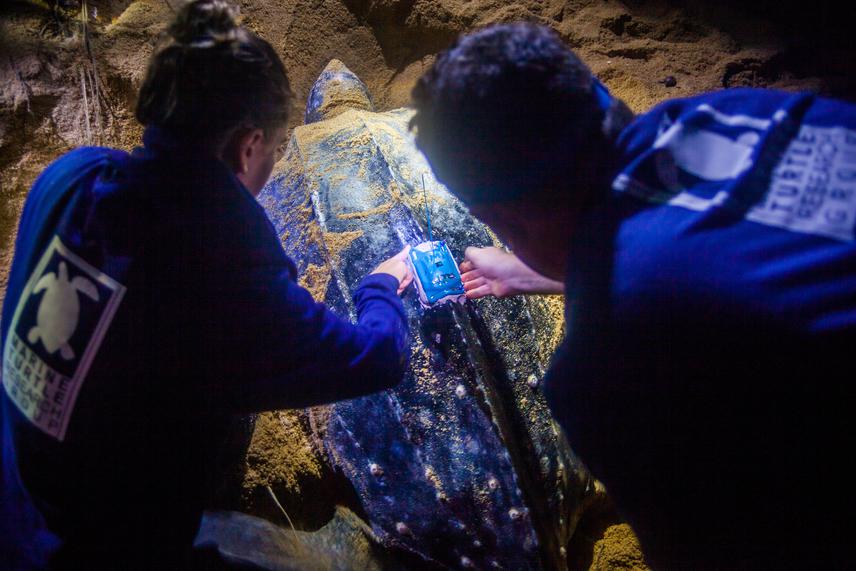Liliana Poggio Colman
In the southwestern Atlantic Ocean, leatherback turtles have their only major nesting site in eastern Brazil, on the coast of Espirito Santo state. Long-term monitoring by Projeto TAMAR shows signs of population recovery. However, with a small population size and restricted geographical distribution, alongside the emergence of new threats – bycatch, climate change, pollution and contamination by a large-scale mining disaster in 2015 - they continue to be of conservation concern. We will monitor nesting ecology, reproductive parameters and population trends; and investigate spatial ecology, habitat use and threats to this population, informing conservation strategies for the species. We will also train local community members in monitoring techniques. This project is part of a PhD in collaboration with the University of Exeter, UK, Science Without Borders (CNPq) and Projeto Tamar in Brazil.

In the southwestern Atlantic Ocean, leatherback turtles have their only major nesting site in eastern Brazil, on the coast of Espirito Santo state. Long-term monitoring by Projeto TAMAR (the Brazilian Sea Turtle Conservation Programme) shows signs of population recovery. However, with a small population size and restricted geographical distribution, alongside the emergence of new threats – bycatch, climate change, pollution and contamination by a large-scale mining disaster in 2015 - they continue to be of conservation concern.
The ecology of this endangered species is not completely understood, and during the last two reproductive seasons we have collected data on ecologic parameters for leatherbacks in Espirito Santo. Working together with TAMAR and local community members, we tagged nesting females, collected tissue samples for stable isotopes analysis, and monitored nests’ hatching success and temperatures.
This project will conduct a third season of data collection when in addition to conducting night patrols to record and protect nests, tag females and to monitor reproductive parameters, satellite transmitters will be deployed on four nesting females to study their inter- and post-nesting movements and likely threats that turtles might face during migration, within the coastal and offshore waters of Brazil and into the South Atlantic Ocean. These data will be gathered with information collected from other females to understand habitat use for the entire population.
In addition to training local staff and members of the local community in research and conservation techniques, during the summer (which also coincides with the peak of the nesting season in the region), we will organise activities that promote environmental awareness with the local kids, their families and also tourists that visit the region. During events such as guided tours at the visitors centre in the village of Regencia, as well as during hatchling releases at the beach, participants can learn about the turtle’s life cycles and the work being done in the region to protect them. We believe that the involvement of the local community is key to maximize conservation efforts.
This project is part of a PhD being conducted at the University of Exeter, UK. It is funded by Science Without Borders, from the Brazilian Government, and in collaboration with Projeto TAMAR in Brazil.